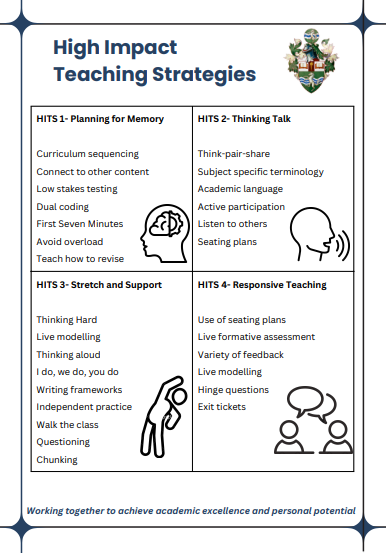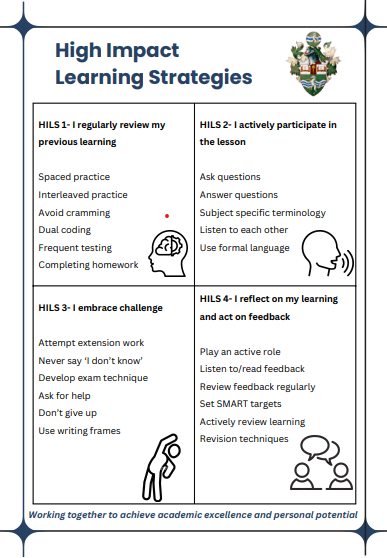Thinking Hard
At Dartford Grammar School for Girls we are dedicated to excellence in teaching, learning and professional development.
At Dartford Grammar School for Girls, we are dedicated to excellence in teaching, learning and professional development.
We believe that students learn best when there is consistency in our approach. We hold common expectations of our practice and through mutual challenge and support we ensure that teaching is of a high quality across the school.
Our distinctive ethos of teaching and learning is based on our High Impact Teaching Strategies (HITS) and High Impact Learning Strategies (HILS) for students. Within these strategies, we utilise 12 Thinking Hard devices in order to produce high challenge, lessons which can transform the learning climate in the classroom and support students’ thinking.
Thinking Hard
Influenced by Professor Robert Coe’s 2013 publication Improving Education we believe that ‘Learning happens when people have to think hard’. With the advent of more challenging curricula across the key stages and the demands of both broader and deeper subject knowledge, students are required to develop depth of knowledge and understanding, the ability to analyse and evaluate and greater flexibility of thought. These three themes are the foundation of the Thinking Hard Process.
High Impact Teaching Strategies (HITS)
Our four High Impact Teaching Strategies (HITS) ensure challenge for all. These four strategies guide our reflections and provide a framework for our professional development and monitoring and evaluation.
High impact teaching strategy 1:
Planning for Memory
High impact teaching strategy 2:
Thinking Talk
High impact teaching strategy 3:
Stretch and Support
High impact teaching strategy 4:
Responsive Teaching
High Impact Learning Strategies (HILS)
To support our HITS, the High Impact Learning Strategies (HILS) are a toolbox of practical approaches to learning for all students. These strategies are grounded in research and provide students with a language, structure and the practical tools to develop true independence in their learning.
High impact learning strategy 1:
“I regularly review my previous learning”
High impact learning strategy 2:
“I actively participate in the lesson”
High impact learning strategy 3:
“I embrace challenge”
High impact learning strategy 4:
“I reflect on my learning and act of feedback”


Skills for Learning and Life
Within every lesson, extracurricular session and through teacher and student interactions we also prioritise the development of skills which will help students become successful citizens after their school life.
- We ensure that students are taught to develop their reading, writing, communication and mathematics skills.
- We develop students’ critical reading, oracy and presentation skills.
- We teach students how to listen carefully and respond to others in a thoughtful, considered manner.
- We set challenging tasks and teach students to be resilient, confident and independent.
- Through our lessons, we provide students with regular opportunities to reflect on their learning and consider its relevance to current issues and events in the local community and the wider world through our rigorous and rich curriculum.

